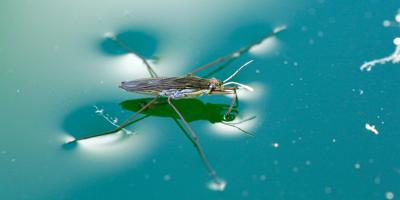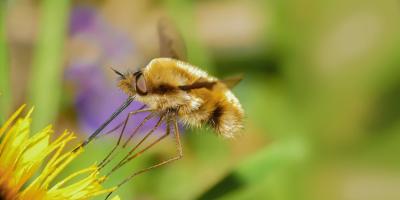A Sea of Spots

The word “plague” is one that has been used for centuries to reference contagious bacterial diseases; however, this term did not always have a strict association with illness. In fact, when the term originated in the times of Pharaoh and the Great Exodus, it often entailed mass invasions of uncontrollable pests; including frogs, gnats, flies, and locusts. While these stories may not seem relevant to pest problems of the modern day homeowner, there are still many that experience these recurring plague-like swarms every single year: in autumn, specifically. This is when millions of homes across New England become magnets for various autumn pests, known as “fall invaders”; including lady beetles, stink bugs, cluster flies and western conifer seed beetles.
Some lucky households are kept in the dark regarding this ongoing battle because the properties that are most affected are typically those that get ample sun exposure. This is because, like many cold-blooded creatures, some insects will actively seek out good places to sunbathe such as houses with access to an abundance of sunlight during the day. New England homes are prime spots for this annual occurrence due to the extreme cold winter temperatures of the region. While this causes no harm to the house or its inhabitants, problems start to occur when the temperatures start to drop in the fall when the direct sunlight is no longer enough for the insects to maintain an ideal body temperature. This annual invasion is how these pests earn their nicknames as “fall invaders”, as they accept every crevice in the structure as an open invitation to enter the home in order to escape the oncoming winter weather.
One of the greatest repeat offenders is the Asian lady beetle. Commonly mistaken for ladybugs, this insect is among the most common of overwintering pests. However, lady beetles can be especially troublesome during these months because unlike the other “fall invaders”, they are only part-time pests.

Life of a Lady
During the summer months, everyone loves to see the red-and-black beetles in their garden. Not only are they undeniably cute, they help protect the garden from some types of threatening pests. Lady beetles are natural predators of the various insects that munch on flowers and plants; namely aphids, scales, mealybugs, leafhoppers, and mites. For this reason, most people are hesitant to kill or deter them, knowing that they are garden friends.
Meanwhile, their close relative that we know as the true “ladybug” is so beneficial that many gardeners will actually purchase them by the hundreds or thousands in order to help rid their gardens of pests. Since these similar bugs are indeed native to New England, they are not nearly as much of a nuisance as their Asian cousins; however, some may still sometimes be seen following them inside during the chilly months in smaller numbers.
As much as we respect and appreciate these insects for the benefits they provide, it is important to understand the full price of having them on your property. They are experts at finding openings, and it’s not uncommon for tens of thousands to invade a single home within just a few short weeks.
Meanwhile, when invading in such great numbers, there is little opportunity to stay out of sight. For this reason, lady beetles are prepared to use their mandibles to bite when handled. More importantly, they exude a yellow defensive chemical when threatened or squished. This can leave not just an unsightly stain, but a foul odor in its demise, which can lead to sinus irritations and mild skin irritations.

The Solution: Plan Ahead
With all of a lady beetles’ benefits and threats in mind, it can be difficult for the homeowner with a green thumb to make the choice whether having these pests on site is worth the seasonal invasions in order to help protect their garden. This is why JP Pest Services has designed a specialized plan to provide the best of both worlds for these beetles.
The catch? It must be done early. There is no way to effectively treat or control “fall invader” pests once they are established inside the home, which means that the only truly effective option is prevention. By creating a protective barrier on the exterior of your home, lady beetles remain welcome to safely reside in your garden, but will no longer find your house an attractive place to overwinter. That’s what we consider responsible pest management: protecting your home and family while still respecting nature and its inhabitants whenever possible.
Have a history with these fall invaders? We’ve got you covered. Take $50 off a new Fall Invaders Program and get ahead of not only lady beetles; but also stink bugs, boxelder bugs, cluster flies, and western conifer seed beetles.



